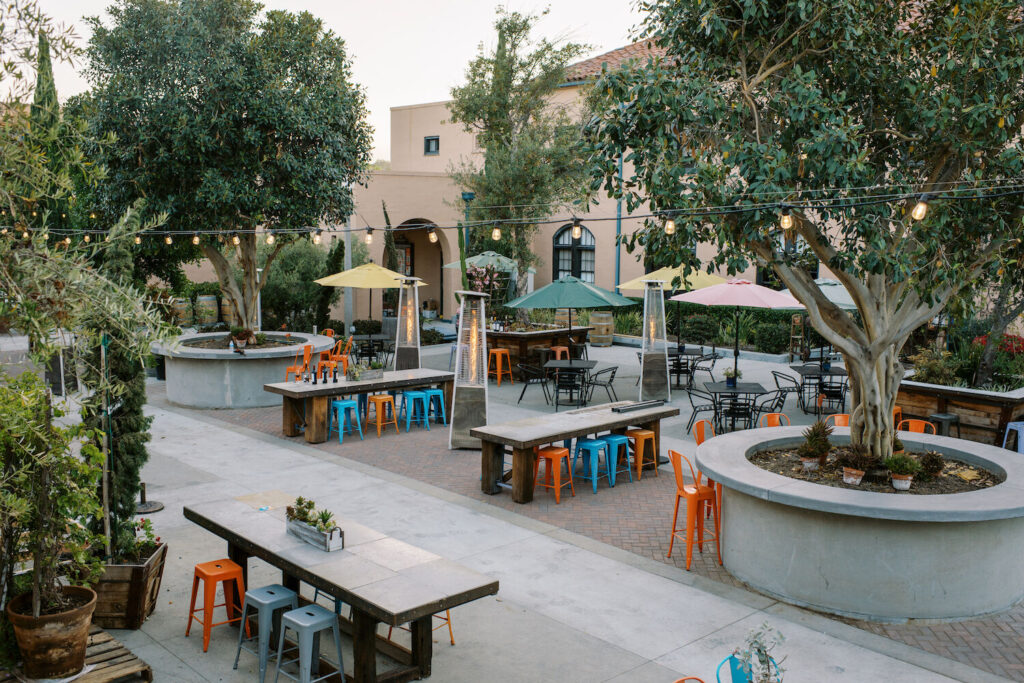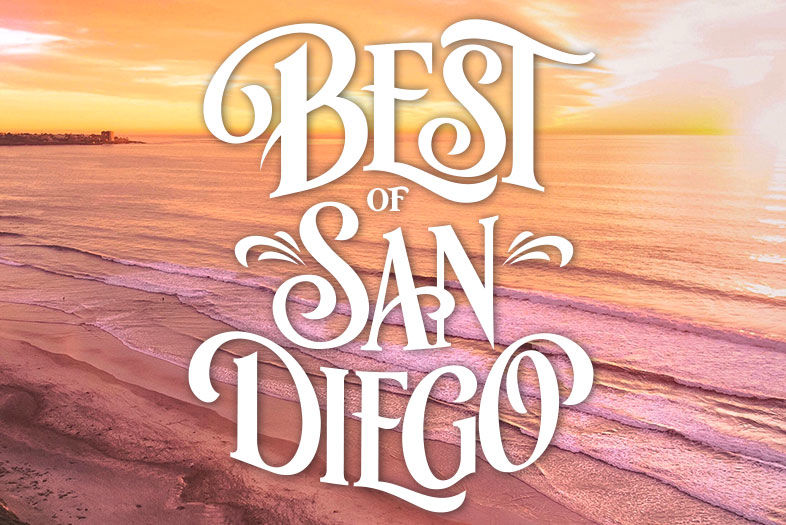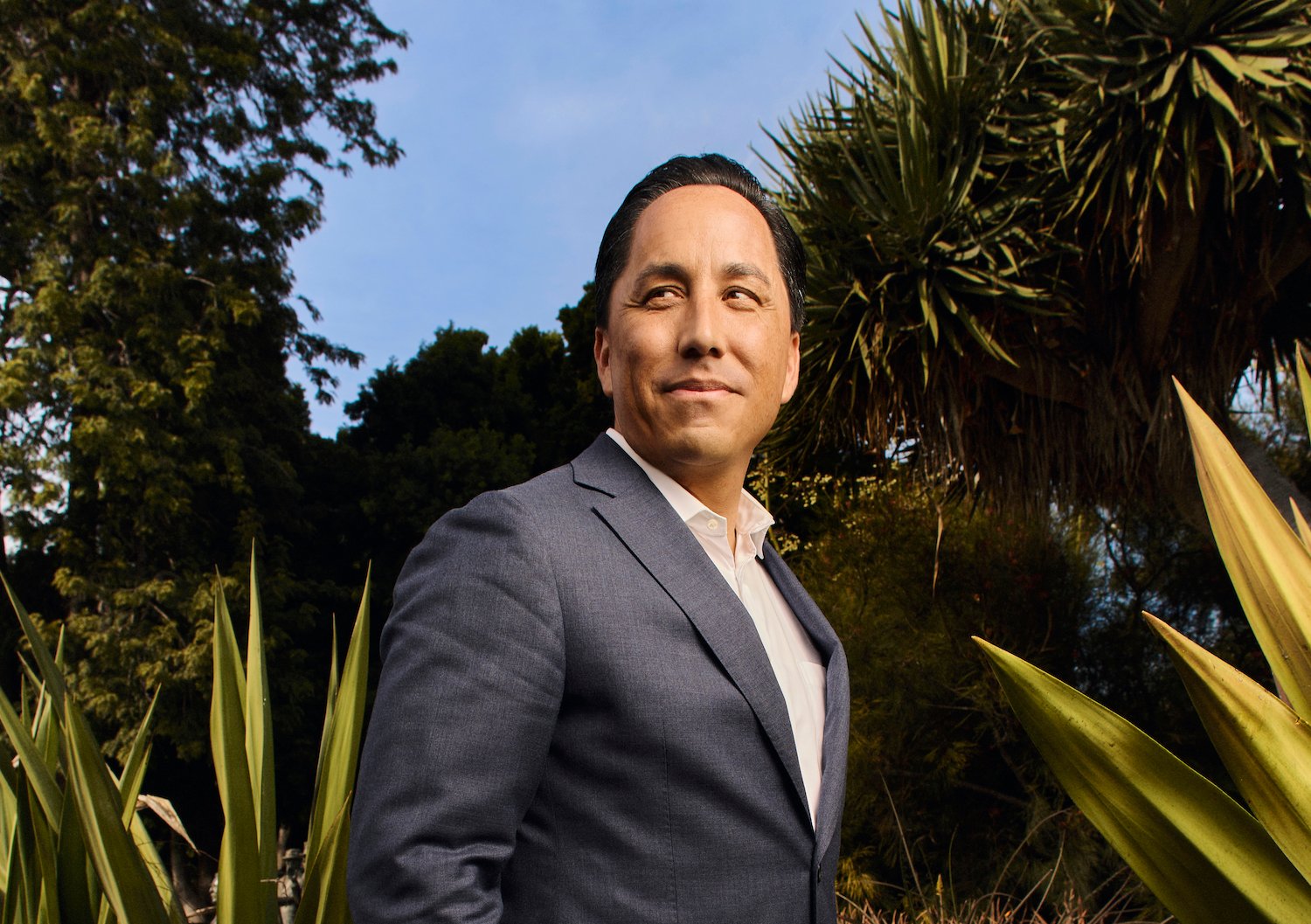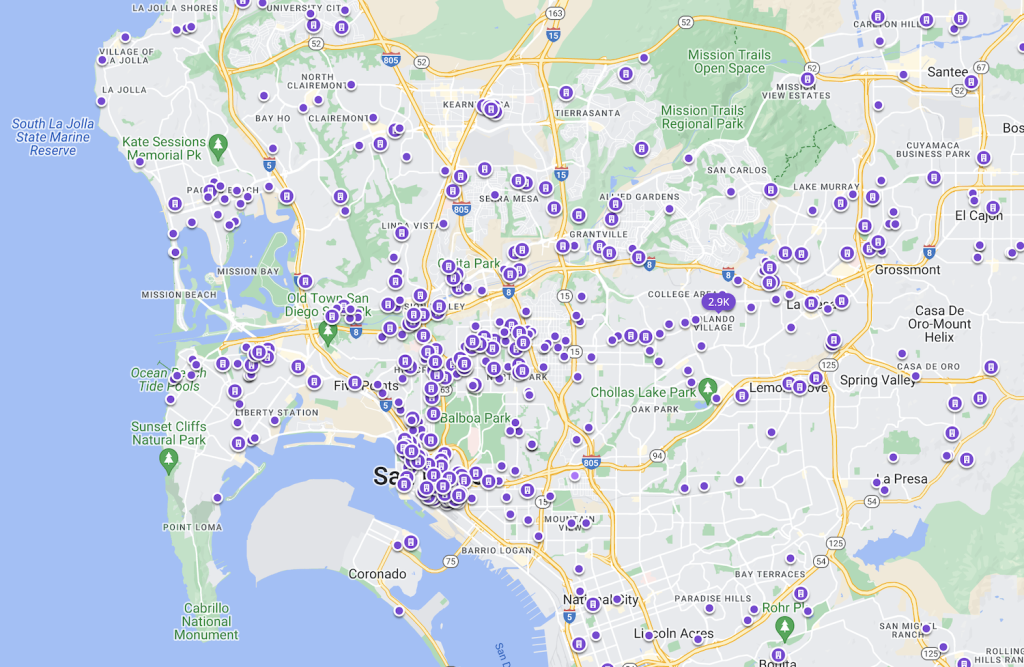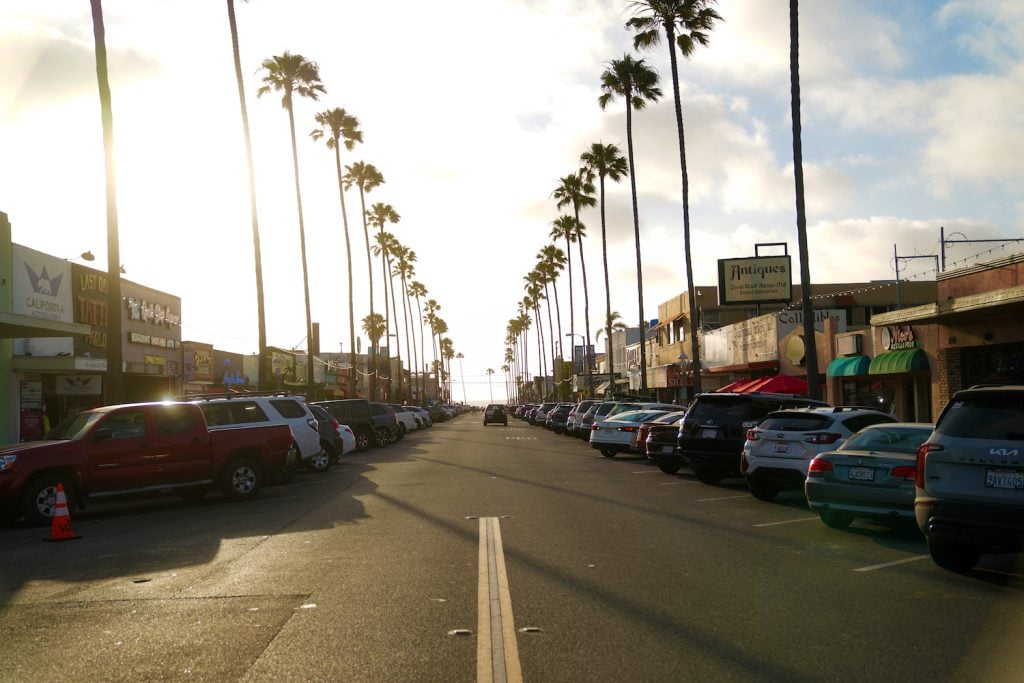You wouldn’t want to get into a staring contest with Mayor Todd Gloria.
That is clear as the mayor— fresh from defeating San Diego police officer Larry Turner to secure another four years in office—lays out his game plan for his second term. Speaking from his 11th-floor office in downtown San Diego, the 46-year-old Democrat checks all the requisite boxes for a successful politician: a beaming white smile; a crisp, navy blue suit; an engaging, amiable conversation style; and unshakable eye contact.
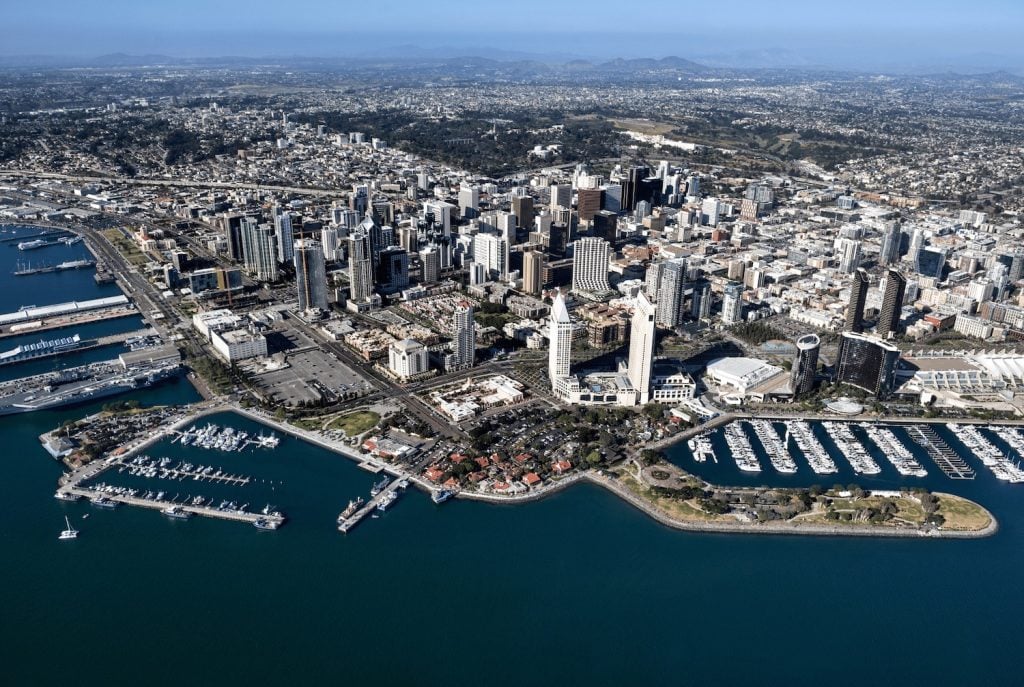
And, right now, his sights are set on one thing: spearheading a new era for the city he grew up in and loves. The first time around, Gloria ran on the slogan “A San Diego for All of Us.” That motto still appears on his official website, but another phrase came up often during his second campaign: “Make San Diego Better.” This expression may not end up on many hats around town, but it speaks to the discontent a lot of citizens, including Gloria, have felt with the city’s trajectory— and the country’s overall in recent years.
So, with a second Gloria term on the horizon, what does the future hold for San Diego?
“Malaise—I think that’s a fair word. I think frustration, even anger, are also accurate words [for how San Diegans feel],” Gloria says. “I think the voters—I’d like to believe—know that I know what they’re angry about.”
San Diego’s increasing homeless population and the disheartening belief that many young San Diegans will never be able to afford to buy a home were hot-button issues in the recent election. On both points and more, Gloria has his work cut out for him. Housing costs keep rising, along with water bills and the price of other essentials. Many of his constituents are feeling priced out.
Meanwhile, Gloria had to make immediate cuts to the city’s spending in anticipation of a $258 million budget deficit in 2025 after voters narrowly rejected Measure E, a small sales tax increase his office was counting on to help cover rising costs.
Critics say mismanagement, not inflation, is responsible for the city’s budget issues. “The sales tax campaign [in 2024] was presented as a way to pay for infrastructure for the city, but its true purpose was to cover the structural deficit created by a dysfunction of management and leadership,” says Victor Lopez, the executive director of The Lincoln Club, a local pro-business nonprofit organization that helped fund Gloria’s opposition in the 2024 election.
“The high cost of living and inflation was top of voters’ minds this past fall,” Gloria tells SDM, saying the city’s finances are “well-managed” and pointing to the fact that the city’s credit rating increased in 2024. “I accept that Measure E’s loss by an extremely slim margin means the city will have to identify other revenue sources, as well as cuts.”
A more limited budget could complicate Gloria’s plans, including those to address homelessness. According to the city’s January 2024 census, San Diego’s homeless population stands at more than 10,500, an increase of over 115 percent since Gloria took office in 2020. According to Gloria himself, that is unacceptable.
“On homelessness, we’re not just watching this happen,” he adds. “We’re actively engaged in expanding shelter capacity by 100 percent while simultaneously having accountability for how people act in public spaces.”
Gloria says he’s committed to enforcing his 2023 Unsafe Camping Ordinance, which prohibits encampments near schools and parks and encourages homeless people to use shelters. He also plans to crack down on theft and drug use.
Gloria, a self-described “proud Democrat,” says he’s not afraid to buck party trends if it means accomplishing those goals. That’s why he voted in favor of Prop 36, which increased sentences on certain drug and theft charges and allowed for stiffer felony charges—a move that put him at odds with many party members but aligned him with 68 percent of Californians.
Gloria’s critics, however, argue his efforts to curb homelessness have so far failed.
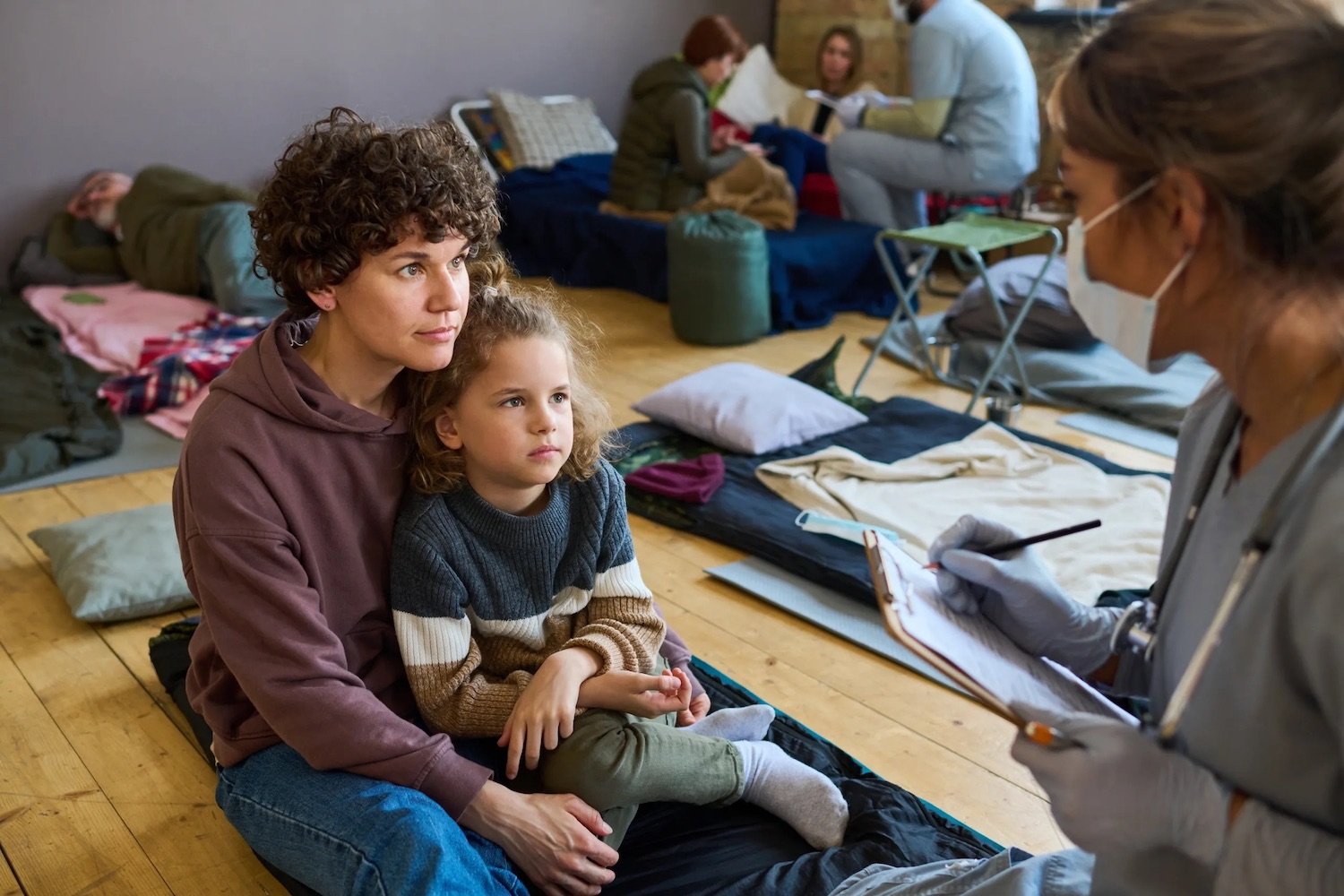
Joanne Standlee, executive director of Housing 4 the Homeless, a La Jolla–based 501(c)3 nonprofit organization, says she would give the mayor a failing grade on that front. Standlee believes there are too many loopholes that allow developers and landlords to avoid compliance with the city’s Short Term Residential Occupancy Ordinance, which went into effect in 2023 and is aimed at reigning in short-term vacation rentals in favor of more long-term rentals for residents.
“If we would just enforce the laws that we have for short-term vacation rentals and ADUs, we would have a lot more housing in San Diego,” Standlee says, adding that the city could enact stricter laws similar to those in New York City, where a 30-day minimum is required for full-unit short-term rentals—a move that could potentially turn thousands of current vacation rental properties in San Diego back into longer-term housing.
“The city’s short-term rental laws were developed over several years with substantial public input,” Gloria tells SDM. He says the city is enforcing them and that additional regulations would have to come from the City Council.
“During Mayor Gloria’s first term, San Diego’s homeless population more than doubled, creating serious challenges for the business community,” Lopez says. “Increased safety concerns, sanitation issues, and declining foot traffic have hurt local businesses, especially downtown. Addressing this crisis is essential to restore the city’s economy, protect its reputation, and ensure San Diego remains a thriving hub for business and investment.”
Gloria says he plans to continue making progress on San Diego’s top priorities, including “fixing our streets, addressing our housing shortage, tackling homelessness, and ensuring San Diego remains one of America’s safest big cities.”
Addressing homelessness during his next term, he adds, is vital, because it seeps into the everyday experience of San Diegans.
“[San Diegans] can have compassion for those who are unsheltered but simultaneously expect [that] if their taxpayer dollars are creating shelters, our shelters need to be utilized. You can’t just lay in public and obstruct people’s pathways to businesses, to schools, to parks,” he says. “It isn’t that we’re an unsafe city—clearly not comparatively. We’re in a good spot, but I think when you see the basic disorder in some of our public spaces, it conveys a level of lack of safety. So being homeless is not a crime, but when you see someone is camping outdoors or littering or defecating … that’s a problem.”
Lopez agrees with the mayor on this point, saying the homelessness issue is a key factor rising downtown San Diego building vacancies.
And while Gloria intends to continue confronting homelessness, his track record so far has been spotty.
Earlier this year, one of his initiatives, dubbed “San Diegans Together Tackling Homelessness,” launched with the ambitious goal of growing an initial $250,000 in funding into $370 million in donations by the end of 2024, but the program hasn’t come close to hitting that target. At the start of December 2024, SDTT had raised only $1.3 million, and the program’s lone expenditure was $2,400 spent on T-shirts for a volunteer cleanup operation in the summer.
And while Gloria claimed to have added 930 shelter beds to the city’s system over the course of a year, an October 2024 inewsource investigation found that more than half of those were tents in city-sanctioned campsites. Expiring short-term deals led to the loss of hundreds of beds.
To more fully address the needs of the city’s homeless population, Gloria says the primary solution is an obvious one: San Diego needs to build more housing, particularly housing aimed at growing families. It’s an issue that’s personal to Gloria.
He loathes that many millennial and Gen Z San Diegans believe owning a home is a pipe dream. That’s not the city he grew up in, he says. His mother was a maid, and his father began his career as a gardener and worked his way up to a production position at an aerospace company. Though they didn’t have college degrees, they were able to buy a home through hard work. That should still be possible, Gloria says, but he’s seen firsthand how difficult it is in today’s San Diego.
Gloria points out that many constituents are shocked to hear he’s a renter, as is his older brother Tye.
“[Tye has] done everything right,” Gloria says. “He went to school, he got a degree, he has a good job, he’s raising his family, he’s paying his taxes, and he’s getting the same signal [many young San Diegans are] getting. That pisses me off. I can’t stand it.”
Gloria worked to address the housing crisis during his first term. His Housing Action Package 2.0 was signed into law in 2024. The plan aims to build small, single-room housing units; increase the amount of dorm-style housing near universities; and make it easier for homeowners to add accessory units to their properties.
But some San Diegans haven’t loved the strategy. Expanded ADU-building remains a fraught issue throughout the city.
In his second term, Gloria says, he wants to continue cutting the proverbial red tape and make it less difficult to build three- and four-bedroom houses. That will send a message, Gloria adds, that San Diego is still a place for young families.
“This year, I’ll seek to continue to expand shelter options to bring people off the streets; ensure our first responders have the personnel, technology, and support they [need] to protect San Diegans; [and] invest in our streets and other critical infrastructure,” he tells SDM. “We’ll keep innovating to increase our housing supply, with a special focus on creating for-sale homes at a price affordable to first-time buyers.”
City Councilmember Sean Elo-Rivera, who has backed the mayor’s push for more housing, says he’s on board with the mayor’s vision for his next term.
PARTNER CONTENT
“We need more housing. One of the main reasons housing is as expensive as it is is the lack of supply that is a result of decades of underbuilding. We need to build more,” Elo-Rivera adds.
Building, of course, is expensive in its own right. So, with a stymied budget and slow progress on his previously implemented policies, can Gloria keep his promise to improve San Diego? Only time will tell. One way or another, Gloria’s mayoral legacy—and perhaps San Diego itself— will be defined by these next four years.


